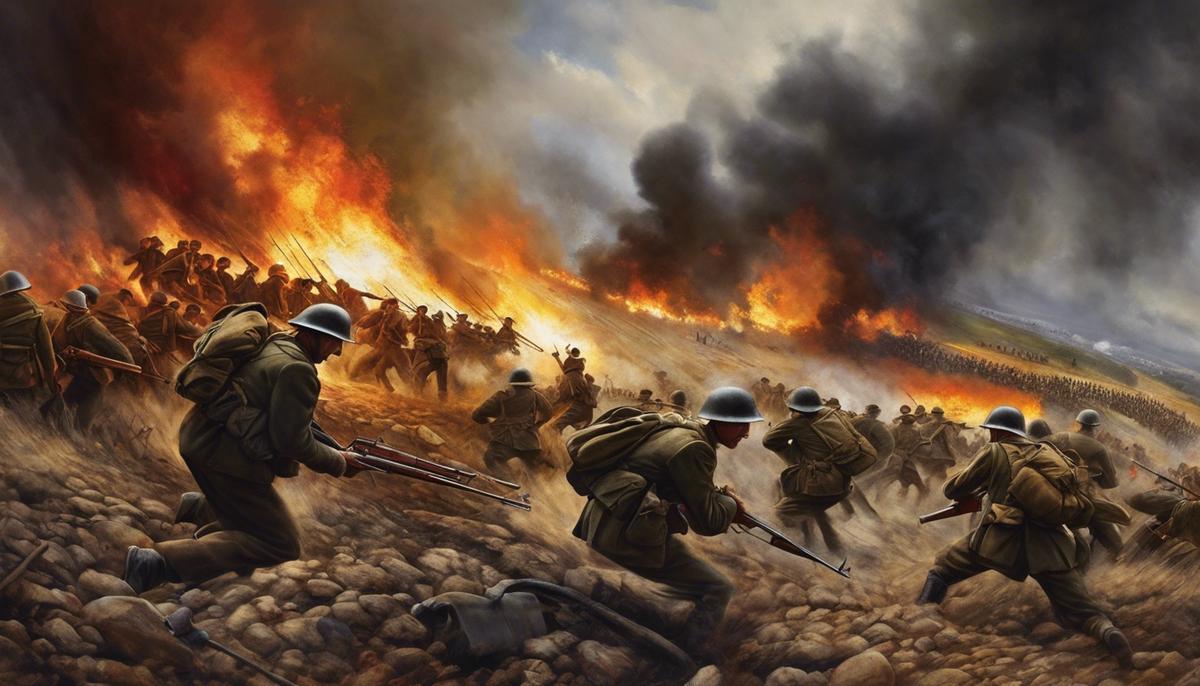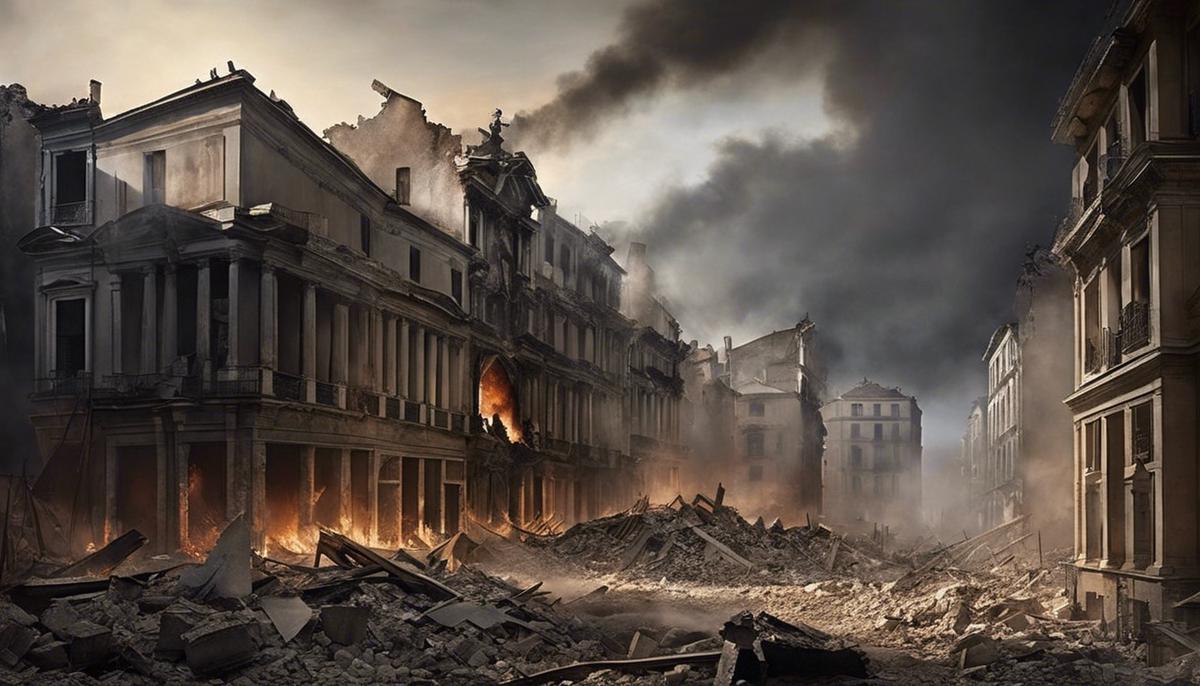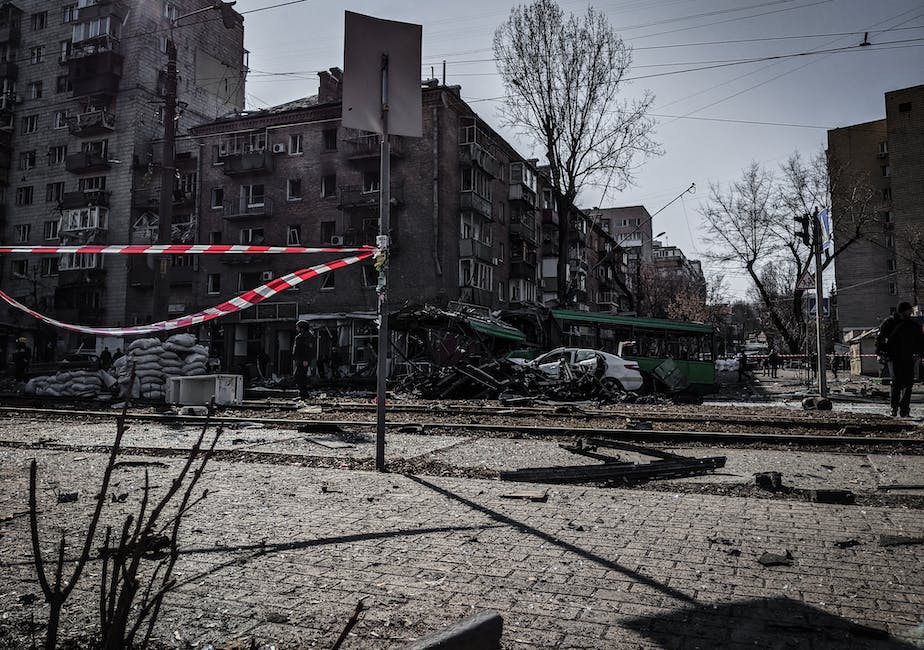In the annals of history, the Spanish Civil War stands as a pivotal time of turbulence, a maelstrom of political ideologies, socio-economic shifts, and global power struggles. The storm gathered silently in the backdrop of a vibrant yet rapidly changing Spain and eventually broke loose, yielding a landscape significantly altered by the trials of conflict. At the epicentre of this storm sat Guernica, a humble Basque town subjected to the ruthlessness of modern warfare whose tragic fate, immortalised by the haunting strokes of Pablo Picasso, brought the devastation of war into luminous, unforgettable view. This thesis is an exploration of these powerful moments, meticulously dissecting the complex tapestry of events, forces, and impacts to form a clear, comprehensive understanding of one of the darkest chapters in Spanish history.
Contextual backdrop of the Spanish Civil War
Major Precipitating Factors Leading to the Outbreak of the Spanish Civil War
The Spanish Civil War, a brutal conflict that raged from 1936 to 1939, was not an event birthed in isolation. Rather, it was the culmination of numerous historical occurances, socio-political shifts, and escalating tensions that bombarded the Spanish society. This complex tapestry of conflict sprouted from the fertile soil of economic strain, political instability, and deep-seated social issues. To truly understand how this tumultuous war was ushered into reality, a thorough examination of these precipitating factors is necessary.
Economic distress is one of the first significant veins to trace. Spain grappled with an economy predominantly based on agriculture. This unstable economic model was fraught with numerous issues, including over-dependency on single-crop farming, disparity in land ownership, and widespread rural poverty. To illustrate, by the late 1920s, approximately 67% of all Spanish farmland was owned by 2% of landowners. This uneven distribution of wealth created a socio-economic chasm that fed into escalating discontent, sparking initial sparks of revolt among the Spanish peasantry.
Political instability, the second crucial precursor of the Spanish Civil War, was another significant instigator. The collapse of the monarchy in 1931 and the ushering in of the Second Spanish Republic brought about intense political fragmentation. The Republic, although well-intentioned, was met with fierce opposition from both the right-wing nationalists and the left-wing socialists, rendering the morphology of the political landscape jagged and unpredictable. Coupled with frequent changes in government, resulting in oscillations between conservative and liberal ideologies, this period nurtured a hotbed for tension and division.
Lastly, one cannot neglect a telling catalyst, social discord. During this period, Spain was steeped in profound societal divide, characterised predominantly along lines of wealth and religion. Spain was, and still predominantly remains, a Roman-Catholic nation. The radical land and education reforms, as well as freedom of worship instituted by the Republican government, led many devout Catholics to feel marginalised and targeted. This, coupled with the deep-seated wealth disparity, bred potent undercurrents of grievance and discontent that eventually overflowed into open conflict.
In conclusion, a constellation of precursors plunged Spain into a devastating civil war. The economic strain, exacerbated by gross mismanagement and unequal distribution of wealth, political instability characterized by factional divisions and fast-paced ideological shifts, and amplifying social conflict rooted in religious and wealth disparity were key components of the war’s eruption. While these paint a staggering image of the conflict’s pre-stages, they concurrently enrich our understanding of this significant episode in Spain’s history. This discerning examination of causative factors should serve as both a lesson learned from history and as a guide for steering societal progress toward harmony and unity.

The main events and impacts of the Spanish Civil War
Shifting Focus from the Prelude to the Fiesta
Having laid bare the climactic concatenation of gripping socio-political and economic factors, we now throw light on the tumultuous events that ensued, causing significant upheavals in Spanish society, thusly, shaping the destiny of the nation. We traverse through time uncovering the pivotal battles, discerning strategic turning points, and evaluating their subsequent socio-political implications.
Key Battles: Bearing Hallmark of Ferocity
Let us first undertake a voyage to Brunete, the locus of a crucial battle fought in July 1937. The Republicans, in a bid to divert Nationalist forces from the northern front, launched a scathing offensive. Despite achieving initial success, the limited reserves and powerful and determined counterattacks by Nationalists led to a stalemate, causing extensive loss of lives and resources.
Northward, on the banks of Ebro River, we witness the longest and one of the deadliest battles, forged in the summer heat of 1938. The determined Republicans, riddled with political inconsistencies but unified in the face of adversity, launched surprise attacks to break the Nationalist hold on the territory. Despite significant gains, the battle ended in favour of the Nationalists. The protracted conflict significantly depleted Republicans’ resources and manpower, thus precipitating their eventual defeat.
Turning Points: Twists in the Narrative
Apart from the ferocious battles, we discern specific strategic moments that served as significant turning points. The brutal battle of Teruel, initiated in late 1937 by the Republicans, witnessed unprecedented weather extremities. The initial Republican victories were subverted by Nationalist counteroffensives, leading to further fractioning of the Republican forces and disrupting their coordinated efforts.
Following this defeat, the swift and decisive Aragón Offensive by Nationalists in early 1938, leading to the near annihilation of the Republican forces, marked another significant turning point. It hastened the process of disintegration within the Republican camp and further bolstered the Nationalists’ position, steadily steering towards the inevitable victory.
Socio-Political Impacts: Ripples across the Landscape
The immediate aftermath of the war saw profound and extensive socio-political changes reserved for Spain. Nationalists’ ascendancy ignited a perilous era, with fierce repressions, purges, and mass executions running rife as part of Franco’s dissatisfaction and disdain for liberalism and Marxism.
Spanish society was despotically remodelled following the tenets of Franco’s Falangist ideology, suppressing regionalisms, and promoting Castilian language and Roman Catholicism. The pervasive culture of fear and repression persisted, marring the fabric of Spanish society.
Internationally, the conflict led to the solidification of the Non-Intervention Agreement, despite the covert military involvement of various European powers. This marked a pivotal moment of hypocrisy in international diplomacy, with the Spanish Civil War shaping the alliances that would shape the landscape of the impending Second World War.
Thus, the Spanish Civil War, played out upon the topography of Spain, left indelible scars and profound impressions on the socio-political landscape of Spain and the world beyond. The interplay of strategised military contests and pivotal turning points, juxtaposed against the backdrop of broader socio-political transformations, presents a striking, albeit grim, narrative, warranting intellectual inquiry and remembrance.

Significance of Guernica in the Spanish Civil War
As we delve into the Spanish Civil War further, we encounter one event impossible to skip over due to its profound impact on global perceptions of wartime ethics and civilian casualties: the Bombing of Guernica. This small, historically significant Basque town was targeted by an unprecedented aerial bombing operation on 26th April 1937, orchestrated primarily by the German and Italian fascist forces aligning with Franco’s Nationalists.
This horrific incident marks a pivotal chapter in the Spanish Civil War primarily due to its sophisticated use of aerial warfare fostering significant civilian casualties, a modus operandi hitherto unexplored to such a chilling extent. With a death toll ranging between 200 to 300 individuals – predominantly women, children and elderly – the operation left the historical town almost entirely devastated, sparking an international outcry concerning the unprecedented and indiscriminate targeting of civilians in modern warfare.
The perpetrators, German and Italian air forces, under the directives of their pro-Franco alignment, displayed a brazen disregard for customary conventions of warfare. This act was not merely a military operation aimed at achieving tactical advantages but served as a horrifying demonstration of their airpower capabilities. The Luftwaffe’s Condor Legion and the Italian Aviazione Legionaria, employing armaments including 250 kg high-explosive bombs and incendiaries, transformed a vibrant civilian town into a desolated entity in mere hours.
Moreover, Guernica was an emblem of Basque cultural and historical identity and autonomy, making the atrocity even more severe in the symbolic realm. The assault turned the town into a wartime symbol, hauntingly epitomised by Picasso’s celebrated painting, aptly named ‘Guernica’, communicating the horrifying essence of the incident to a global audience.
The Bombing of Guernica, though occurring within the confinements of the Spanish Civil War, reverberated beyond Spain’s borders, escalating the war’s humanitarian and ideological stakes and raising questions about the confines of warfare and the protection of civilians. This incident singled out wartime ethics and conduct as a paramount international concern. It served as a precursor to the Second World War, during which instances of collective punishment and the diminishing lines between military targets and civilian population would tragically multiply.
The incident’s significance is manifold. Besides the tangible destruction and loss of life, it transformed international perspectives on warfare. Furthermore, it foreshadowed the extensive, indiscriminate bombings that would define much of the Second World War and forced the international community to confront deeply unsettling questions about centuries-old norms of warfare. It compelled us to ponder upon the vulnerability and sacredness of human life amid the clamour of ideological battlefields.
In conclusion, the bombing of Guernica presents a stark and haunting canvas, integrating various human emotions and intricacies of war, and hence holds a significant place in the Spanish Civil War narrative. The incident hits home the devastating realisation of the lengths to which human cruelty can stretch in the name of ideology, war, and power, making its study vital for our comprehension of the fragile lines discerning the humane from the inhumane in the landscapes of war.

The Artistic Depiction of Guernica
The bombing of Guernica on 26 April 1937 remains profoundly etched in our collective memory, primarily due to the visceral portrayal of the incident in Pablo Picasso’s ‘Guernica’. This Basque town, significant for its cultural heritage, became an international symbol of the virulent cruelty of war.
It was during the Spanish Civil War where a revulsion to this large-scale annihilation of human lives had its genesis. Luftwaffe’s Condor Legion and Italian Aviazione Legionaria laid bare the town of Guernica, obliterating three-quarters of its buildings and resulting in swaths of civilian casualties. Undeniably, an ‘all is fair in war’ attitude guided these transgressions, violating the most basic customs of warfare, viz., the regard for civilian life and property.
‘Guernica’, Picasso’s stark black and white mural, results from a deep sense of disillusionment sparked by the atrocity. The potent mix of distorted human figures, broken weapons, a distraught horse, and the apparition-like figure of the bull, serve to decant the sorrows of war. Picasso’s unconventional style has often been compared to the cataclysmic event itself, fracturing norms and expectations like the tumultuous bombing fractured Guernica.
This painting catalysed a surge of anti-war sentiment across international borders and thus, in effect, the bombing of Guernica reverberated far beyond the confines of the Basque Country, altering the way warfare was viewed globally. Undeniably, this laid the groundwork for a broader, deeper understanding of warfare morality impacting international alliances and policies.
Guernica, in reality and through Picasso’s lens, forecasts the further devastation encompassed in World War II with its city-wide bombings, introducing the world to the grim realities of aerial warfare. As such, the devastating scenario served as a sombre harbinger, redefining warfare as no longer restricted to the battlefield and unfortunate soldiers but enveloping innocent civilians in its deadly grasp.
Essential to the narrative of the Spanish Civil War, Guernica cannot be overlooked. It accentuates the vulnerable position civilians occupy amidst power struggles. In Picasso’s ‘Guernica’, the carnage of the town morphs into mankind’s worst fears of warfare, rendered unmistakably in every jagged line and haunting figure.
A thorough study of this event provides critical context for the understanding of 20th-century warfare, and the brutal awakening to its cost. Ethical dilemmas connected with the bombing of Guernica continue to fuel debates concerning warfare morality, illustrating how one brutal act could forever alter the course of human history. It ultimately underlines the fragility of human life during times of war and highlights the desperate need for peaceful resolutions over bloodshed.

Through the lens of the Spanish Civil War and the decimation of Guernica, a singular narrative of power, humanity, and the devastating costs of conflict emerges. It is a tale held in the balance between the destruction of a world war and the birth of a new political era. More than a simple chronicle of events, it is a testament to human resilience, a stark reminder of the impact conflicts have on societies and a call to preserve peace. The scars of Guernica resonate within Picasso’s masterpiece, serving as a visual epitaph for a tragically marked era and irrevocably binding art and history, grief and rebellion, into a striking tale of survival and change. By delving into the depths of these events, we gain not only a richer understanding of the past, but insight into how today’s world is shaped by its history and, in turn, how we might have the power to mould the future.
























